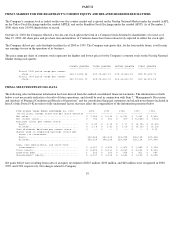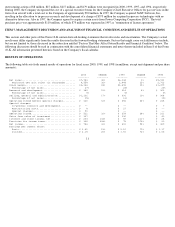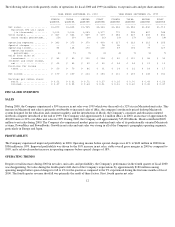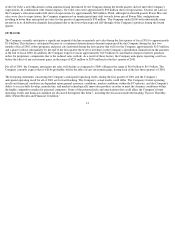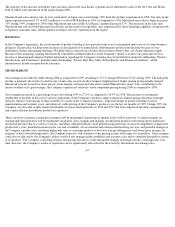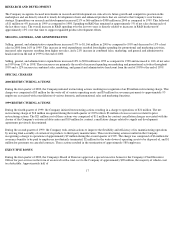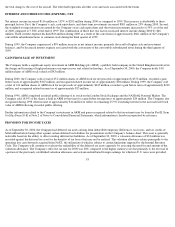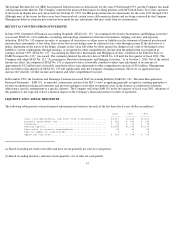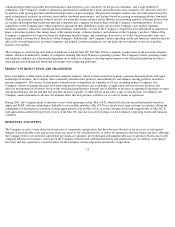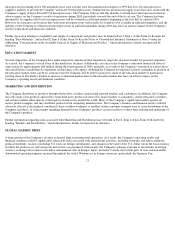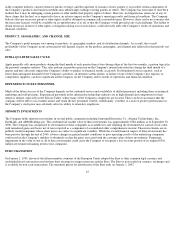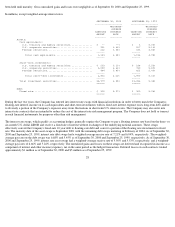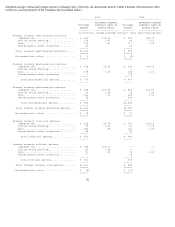Apple 2000 Annual Report Download - page 23
Download and view the complete annual report
Please find page 23 of the 2000 Apple annual report below. You can navigate through the pages in the report by either clicking on the pages listed below, or by using the keyword search tool below to find specific information within the annual report.As of September 30, 2000, the Company had $4.027 billion in cash, cash equivalents, and short-term investments, an increase of $801 million
or 25% over the same balances at the end of 1999. During 2000, the Company's primary source of cash was $826 million in cash flows from
operating activities. Cash generated by operations was primarily from net income and increases in accounts payable and other current liabilities
partially offset by an increase in accounts receivable. The Company's cash and cash equivalent balances as of September 30, 2000 and
September 25, 1999 include $7 million and $4 million, respectively, pledged primarily as collateral against outstanding derivative positions.
In addition to the net purchase of short-term investments of $936 million, net cash used by investing activities consisted primarily of $232
million for the purchase of long-term investments, including $200 million invested in EarthLink Network, Inc. (EarthLink) discussed below,
and $107 million for the purchase of fixed assets. These uses of cash were partially offset by proceeds from sales of ARM shares of $372
million. The Company currently expects capital expenditures to increase to approximately $225 million during 2001 to accommodate
information systems enhancements and strategic initiatives.
In July 1999, the Company's Board of Directors authorized a plan for the Company to repurchase up to $500 million of its common stock. This
repurchase plan does not obligate the Company to acquire any specific number of shares or acquire shares over any specified period of time.
During 2000, the Company repurchased a total of 2.55 million shares of its common stock at a cost of $116 million. Since inception of the plan,
the Company has repurchased a total of 5.05 million shares of its common stock at a cost of $191 million.
The Company believes its balances of cash, cash equivalents, and short-term investments will be sufficient to meet its cash requirements over
the next twelve months, including any cash utilized by its stock repurchase plan. However, given the Company's current non-investment grade
debt ratings (Standard and Poor's Rating Agency of BB and Moody's Investor Services of Ba2), if the Company should need to obtain short-
term borrowings, there can be no assurance such borrowings could be obtained at favorable rates. The inability to obtain such borrowings at
favorable rates could materially adversely affect the Company's results of operations, financial condition, and liquidity.
NON-CURRENT DEBT AND EQUITY INVESTMENTS
The Company holds significant investments in ARM, Samsung Electronics Co., Ltd, Akamai Technologies, Inc., and EarthLink. These
investments are reflected in the consolidated balance sheets as non-current debt and equity investments and have been categorized as available-
for-sale requiring that they be carried at fair value with unrealized gains and losses, net of taxes, reported in equity as a component of
accumulated other comprehensive income. All realized gains on the sale of these investments have been included in other income. The
combined fair value of these investments was $786 million and $339 million as of September 30, 2000, and September 25, 1999, respectively.
The Company believes it is likely there will continue to be significant fluctuations in the fair value of these investments in the future.
Further information related to the Company's non-current debt and equity investments may be found in Part II, Item 8 of this Form 10-K at
Note 2 of Notes to Consolidated Financial Statements, which information is hereby incorporated by reference.
FACTORS THAT MAY AFFECT FUTURE RESULTS AND FINANCIAL CONDITION
Because of the following factors, as well as other factors affecting the Company's operating results and financial condition, past financial
performance should not be considered to be a reliable indicator of future performance, and investors should not use historical trends to
anticipate results or trends in future periods.
COMPETITION
The personal computer industry is highly competitive and is characterized by aggressive pricing practices, downward pressure on gross
margins, frequent introduction of new products, short product life cycles,
20


